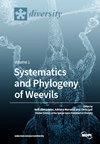Bacterial Products and Their Effect on the Shrubby Legume Calicotome villosa (Poir.) Link
IF 2.1
3区 生物学
Q2 BIODIVERSITY CONSERVATION
引用次数: 0
Abstract
Calicotome villosa is a eurioic legume with broad distribution in the south of Europe. It can grow in almost any type of soil as well as in humid and dry and nutrient-deficient ecosystems. The broad distribution and eurioic nature of C. villosa may be attributed to its ability to establish endophytic associations with plant-growth-promoting (PGP) bacteria housed in the nodules and rootlets. This study examined the legume–microbe interaction of C. villosa growing in two contrasting locations: a hilltop with high sun irradiance and drought, and a valley bottom with a low level of radiation and sufficient soil humidity for plant growth. Calicotome villosa adult plants established endophytic interactions with bacteria in six genera: Pseudomonas, Stenotrophomonas, Bacillus, Paenibacillus, Brevicacterium, and Rhizobium. Plants growing on the hilltop had associated lower bacterial richness than those grown on the valley bottom. All strains were drought-tolerant and produced siderophores, IAA, HCN, and NH3 that stimulated plant performance in C. villosa plants and the other four legumes commonly present in the understory of the shrub communities. The legumes’ capacity to selectively host symbiotic bacteria that enhance plant survival in harsh conditions partly accounts for the diverse partnerships between C. villosa plants and their symbionts, ultimately explaining the wide distribution of this plant species.细菌产物及其对灌木豆科植物Calicotome villosa (Poir.)的影响链接
花椰菜是广泛分布于欧洲南部的一种神经科豆科植物。它几乎可以在任何类型的土壤中生长,也可以在潮湿、干燥和营养缺乏的生态系统中生长。绒毛草的广泛分布和eurioic性质可能归因于它能够与位于根瘤和根茎中的植物生长促进(PGP)细菌建立内生联系。本研究考察了生长在两个不同地点的豆科植物与微生物的相互作用:一个是高日照和干旱的山顶,另一个是低辐射和土壤湿度充足的谷底。绒毛Calicotome成虫与假单胞菌、窄养单胞菌、芽孢杆菌、芽孢杆菌、短芽孢杆菌和根瘤菌6属细菌建立了内生相互作用。生长在山顶的植物细菌丰富度低于生长在谷底的植物。所有菌株都具有耐旱性,并能产生铁细胞、IAA、HCN和NH3,这些物质能刺激毛豆和灌木群落林下常见的其他四种豆科植物的生长。豆科植物选择性寄主共生细菌的能力提高了植物在恶劣条件下的生存能力,这在一定程度上解释了C. villlosa植物与其共生体之间的多样化伙伴关系,最终解释了该植物物种的广泛分布。
本文章由计算机程序翻译,如有差异,请以英文原文为准。
求助全文
约1分钟内获得全文
求助全文
来源期刊

Diversity-Basel
Environmental Science-Ecological Modeling
CiteScore
3.40
自引率
12.50%
发文量
925
审稿时长
11 weeks
期刊介绍:
Diversity (ISSN 1424-2818) is an international and interdisciplinary journal of science concerning diversity concept and application, diversity assessment and diversity preservation. It is focused on organismic and molecular diversity. It publishes reviews, regular research papers and short notes in the regular issues. Related news and announcements are also published. Our aim is to encourage scientists to publish their experimental and theoretical results in as much detail as possible. Therefore, there is no restriction on the length of the papers. Full experimental details must be provided so that the results can be reproduced.
 求助内容:
求助内容: 应助结果提醒方式:
应助结果提醒方式:


